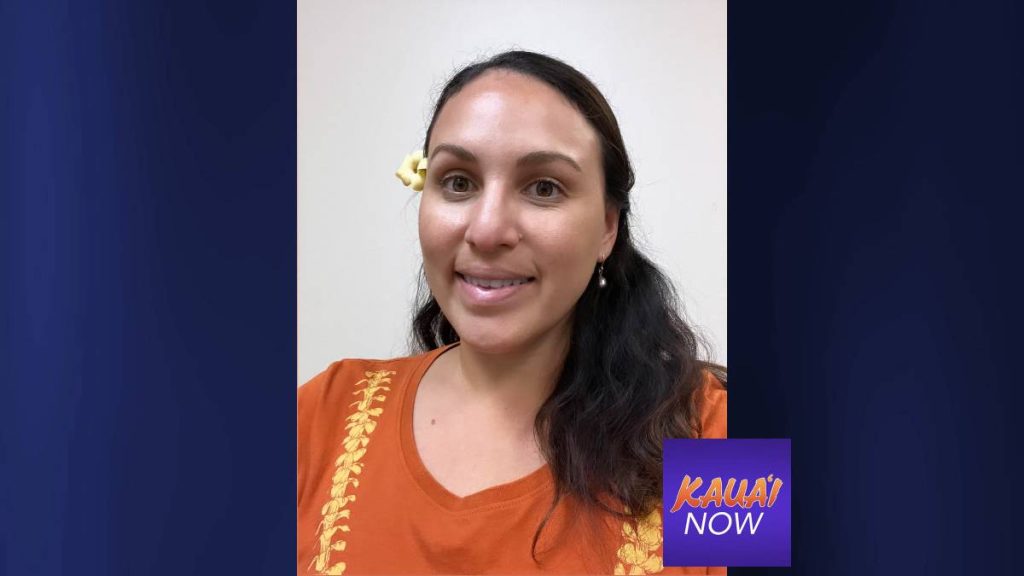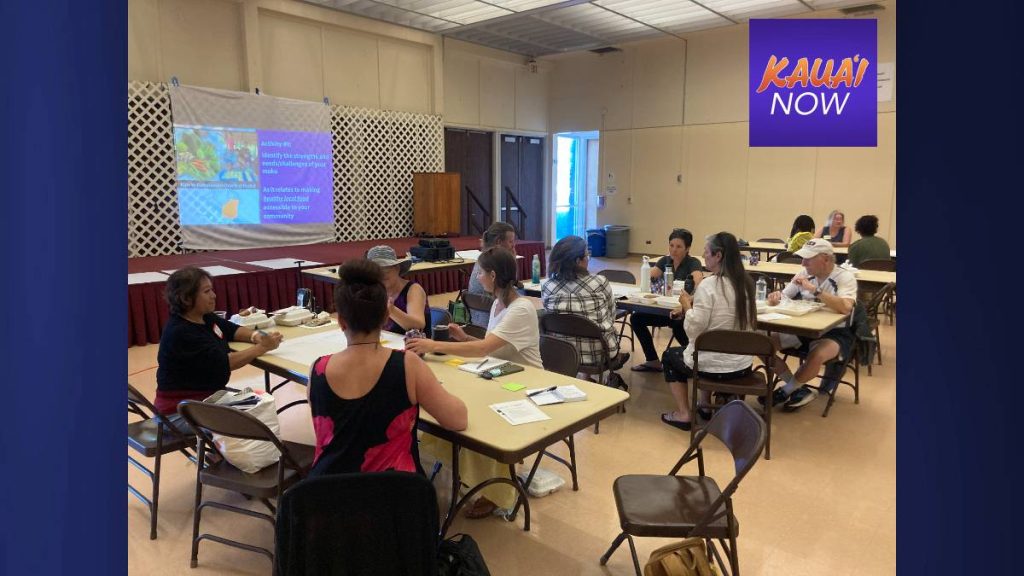Mālama Kaua’i sows seeds of Food Access Plan
Kaua‘i residents still have time to shape a statewide effort to increase access to healthy local food in their communities, where one in three keiki is projected to live in a food-insecure household.
The nonprofit organization Mālama Kaua’i is spearheading the development of the Kaua‘i Food Access Plan. On Wednesday, it held the second of four scheduled meetings with communities located across The Garden Isle, to assess residents’ needs and determine the plan’s priorities going forward.
“In February, we’re going to publish a report on all of our findings,” Mālama Kaua’i outreach specialist Stormy Soza told about 20 East Side residents gathered at the Kaua‘i War Memorial Convention Hall in Līhuʻe.
“We’re going to distribute that to all of our stakeholders, including state legislators and the public.”

The Kaua‘i Food Access Plan is supported by a litany of government and private agencies operating under the aegis of the Hawai‘i State Department of Health Chronic Disease Prevention & Health Promotion Division.
“Their goal is to address obesity, overweight and chronic disease in our local population,” Soza said. “They see the correlation between healthy local food, what people are eating and how that affects our community and our wellness. Do we thrive? Are we happy people? Do we stay in community? Or are we sickly?”
Hawai‘i has the highest cost of living in the United States, with food costs 61% higher than the rest of the country, according to the Hawai‘i Physical Activity and Nutrition Plan 2030 published by the Hawai‘i State Department of Health.
Eleven percent of Kaua‘i residents live in low-income census tracts with low access to grocery stores or supermarkets. (The paper defines “low access” places as more than one mile from a supermarket or large grocery store in urban areas, or more than 10 miles from a supermarket or large grocery store in rural areas.)
More than 14% of the Kaua‘i County population, or 10,250 individuals, were food insecure in 2020, according to the most recently available data from the nonprofit Feeding America. For the state, more than 9.5% of the population, or 136,190 individuals, are food insecure.
Mālama Kaua’i’s own 2022 Kaua‘i Food Insecurity Survey, which included 177 participants representing 472 food-insecure individuals, found one in three participants were unsure if they would have enough to eat every week.

After several rounds of dialogue emceed by Soza and other Mālama Kaua’i personnel, participants at Wednesday’s Food Access Plan meeting reported satisfaction with price stability and food options at their local farmers markets.
However, the East Siders reported dissatisfaction with the high cost of supermarket produce, and said there is a need for more educational opportunities and land access for household gardening.
Other needs expressed by participants included greater information or access to community gleaning programs, which harvest unused produce from private properties; and improved community compost or zero-waste initiatives.
(The County of Kaua‘i already provides free composting bins to residents who make an appointment. More information can be found here.)
Feedback generated from forthcoming meetings in Waimea on Jan. 18 and Waipā on Jan. 25 will also be included in Mālama Kaua’i’s February report, which will be published online.
“We’re going to put all of the draft objectives that you’ve created on a public voting forum,” Soza explained Wednesday. “Everybody can vote publicly … then we’ll decide the final Food Access Plan objectives.”
More information regarding the online forum will be released in the coming weeks, according to Soza.
Attendees appreciated the Food Access Plan organizers’ emphasis on community involvement.
“I’m looking forward to the outcome of the plan,” said Kapa‘a resident Maeve Pax, an AmeriCorps volunteer working at Kaua‘i Community College in Puhi, where she runs sustainability programs and the college’s food pantry.
“I’m very excited they’re taking all of their information from a collaboration to really get to the root of what the people want and making it a community-first plan,” she said.
To registered for a remaining Kaua‘i Food Access Plan community meeting, click here.





